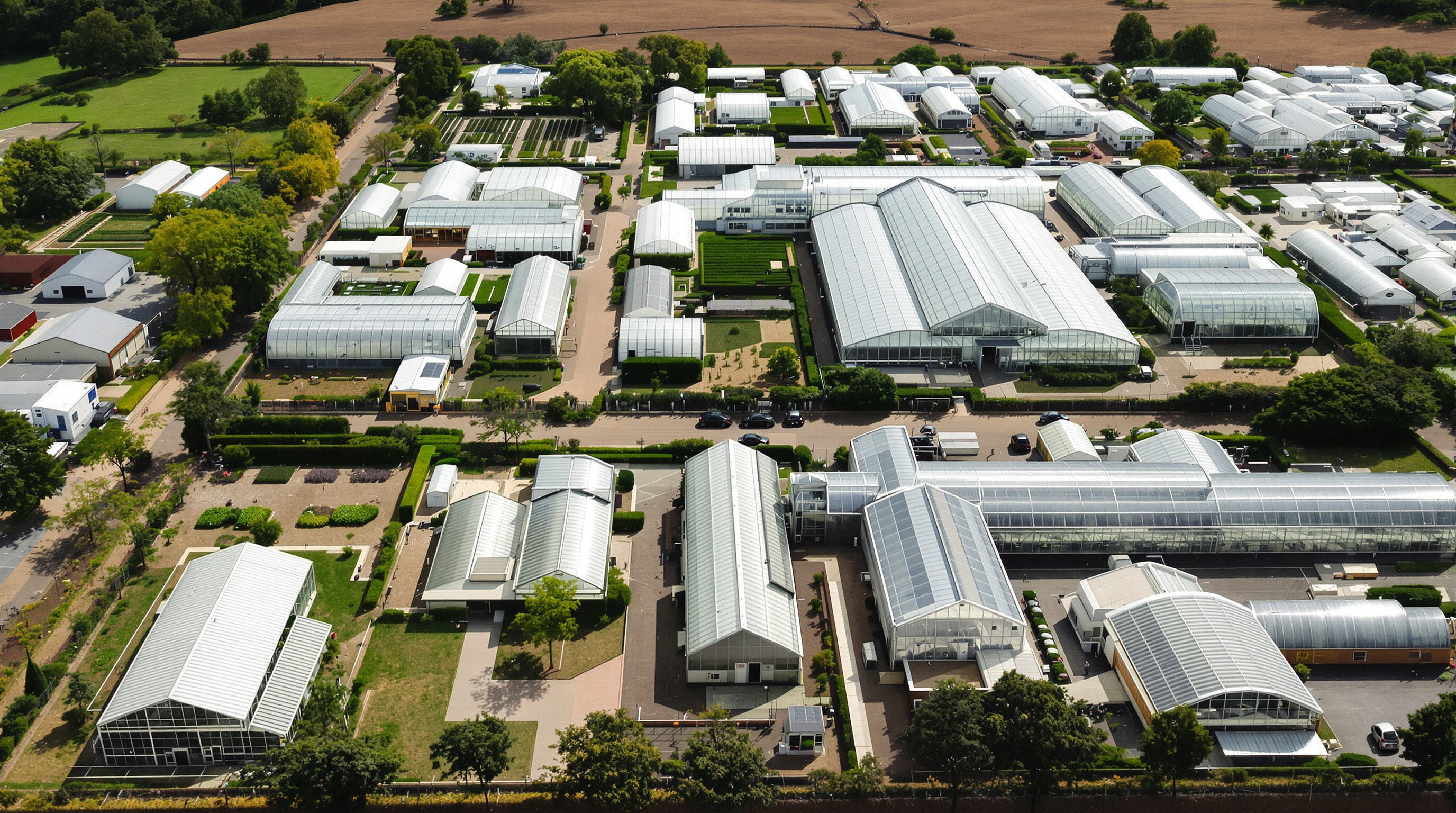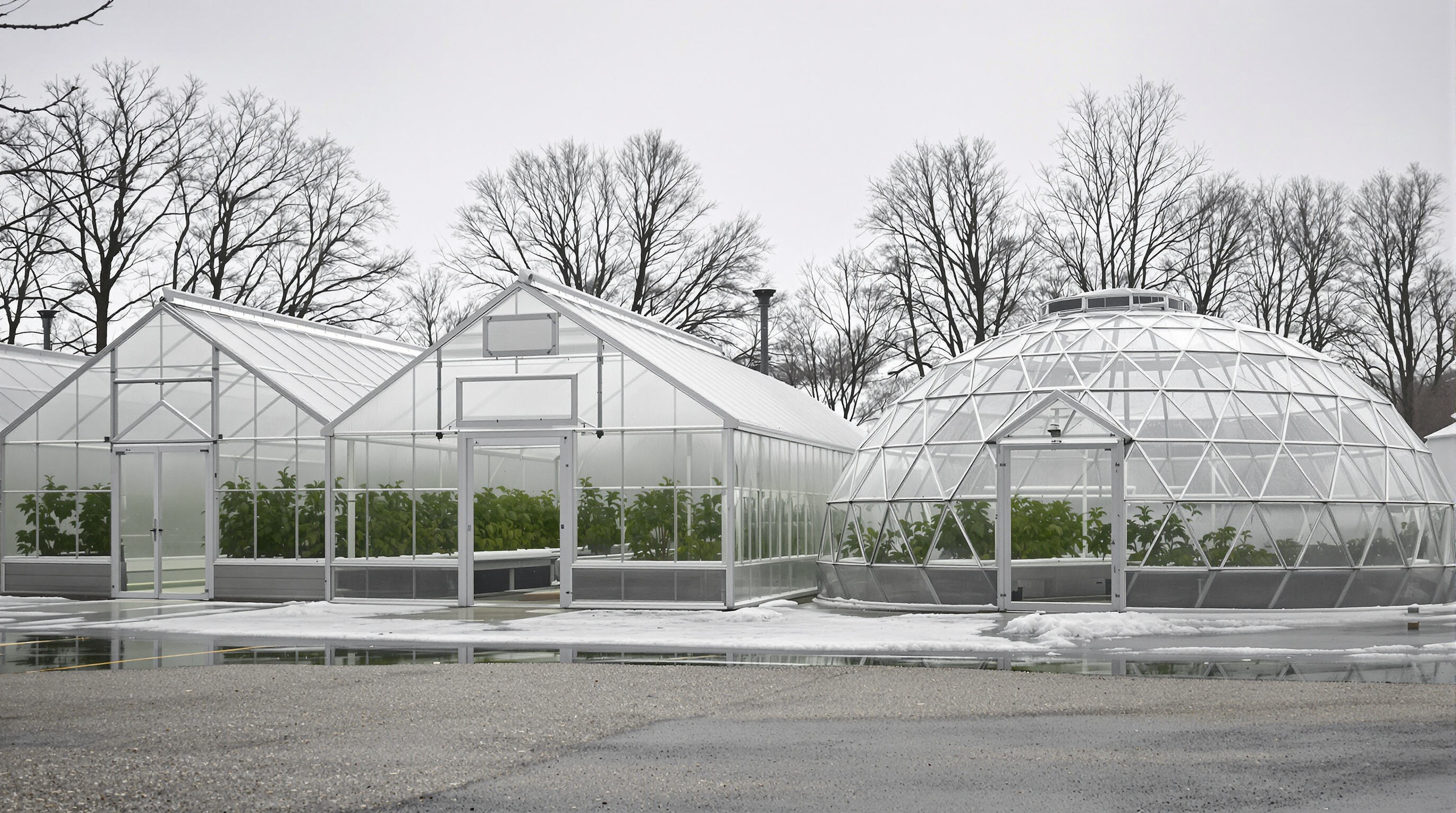Determining the Ideal Greenhouse Size Based on Gardening Goals and Space

Aligning Greenhouse Size with Personal or Commercial Gardening Objectives
Start by clarifying your gardening goals—hobbyists growing seedlings typically need 40–80 sq. ft, while commercial growers often require 1,000+ sq. ft to support crop rotations. According to the 2023 National Gardening Survey, 63% of year-round growers choose greenhouses of at least 200 sq. ft to accommodate diverse plant types.
Assessing Available Garden Space and Site Layout for Optimal Placement
Measure your usable space and consider sunlight exposure and terrain slope. Urban gardens benefit from compact 6’ x 8’ units, whereas rural sites can support larger 20’ x 40’ footprints for commercial use. Maintain a 3–5’ buffer around the structure for maintenance access and proper airflow.
Balancing Square Footage with Heating, Cooling, and Climate Control Needs
Big greenhouses generally need about 30 to 50 percent extra power just to keep things at the right temperature inside. Want to figure out how much heat you'll need? Try this basic calculation method. Multiply square footage by desired temperature increase, then multiply that result by an insulation factor between 1.0 and 1.5 depending on how well your greenhouse holds heat. Let's say we have a small greenhouse covering around 150 square feet that needs temperatures raised by roughly 20 degrees Fahrenheit. With average insulation quality, this would probably require somewhere between 3,000 and 4,500 British Thermal Units. Many growers find online tools helpful for these kinds of math problems. The ACF Greenhouses heating calculator is one such resource that makes all these numbers easier to handle while avoiding unnecessary expenses on heating systems that might be too powerful for what's actually needed.
Year-Round Versus Seasonal Use: How Duration Affects Size Decisions
Year-round growing demands 15–20% more space to accommodate insulation systems and winter crop protection. Seasonal growers can reduce footprint by 25% using vertical shelving, though this limits long-term plant diversity.
Comparing Modern Greenhouse Structural Designs for Performance and Durability

Contemporary greenhouse designs balance functional efficiency with environmental resilience. Architects and engineers prioritize structural integrity while optimizing for climate-specific challenges like snow accumulation, wind resistance, and light diffusion. Below, we analyze popular frameworks and their suitability for different growing conditions.
Overview of Common Greenhouse Structures: Gable, A-Frame, Hoop House, and Geodesic Dome
Greenhouses with gable roofs tend to work really well in cold areas because their steep sides help shake off snow pretty easily. The A-frame style is another good option when dealing with winter weather too, though they do cost less to build since materials aren't as expensive. What these designs lack though is headroom inside. Then there are hoop houses sometimes called Quonset style buildings which actually curve outward. This shape helps push wind away from the structure while still giving plenty of room inside for plants and equipment. For those looking at something even tougher, geodesic domes are pretty amazing. Their triangular panels spread out pressure across the whole structure so it can handle winds blowing faster than 100 miles per hour according to what engineers have tested recently.
Evaluating Gothic Arch, Ridge and Furrow, and High Tunnel Designs for Efficiency
The Gothic arch greenhouse design brings together the best features of different structures. These buildings have gable roofs that naturally shed snow while their curved walls stand up better against strong winds. When growers use ridge-and-furrow systems to link several units under a single roof, they actually save money on heating expenses. Studies show around 18 to 23 percent savings compared to separate greenhouses standing alone. For those looking at seasonal changes, high tunnels provide real advantages throughout the year. The polyethylene covering can simply roll back during warm months to let fresh air in, then固 during colder weather when extra protection becomes necessary for plants inside.
How Structure Impacts Light Penetration, Snow Load, and Long-Term Durability
Greenhouses with steeper roofs over 35 degrees keep snow from piling up, though they do cut down on natural light by around 12 to 15 percent. When building larger greenhouses, extra strong trusses become necessary to deal with heavy snow weights above 30 pounds per square foot. Smaller structures tend to hold up better under pressure without needing special reinforcement. The polycarbonate panels used in those round geodesic dome greenhouses let through about 92% of sunlight while stopping most of the damaging UV rays, which makes them great for growing plants all year long. Studies show that nearly three quarters of all greenhouse failures happen because builders didn't properly account for snow or wind forces, so getting the structural details right based on local weather conditions is absolutely critical for any serious grow operation.
Freestanding vs. Attached Greenhouses: Applications and Design Trade-offs
Pros and cons of freestanding, lean-to, and glass-to-ground greenhouse types
Freestanding greenhouses give growers total freedom where they want to put them since they stand on their own without needing extra support structures. This makes it easier to plan out different planting areas or expand later on as needed. The downside is these types take up quite a bit of room and generally cost around 15 to 20 percent more to heat compared to greenhouses that are connected to buildings. Lean-to models attach to existing walls which helps insulate better, saving about 30% on energy bills in milder climates according to recent USDA reports from last year. But there's a catch too because they only get sun from one side of the building. Glass to ground designs let in maximum daylight thanks to those big windows all the way down to the floor, but builders need stronger bases to withstand winds that can be 40 to 60% stronger than what other greenhouses experience normally.
Specialized designs like semi-dodecagon for unique urban or aesthetic needs
New shapes are solving space problems in urban areas without sacrificing performance. Take the semi dodecagon shape for instance it has those twelve slanted panels that somehow manage to catch 92 percent of available sunlight even when there's not much room to work with, which makes them perfect for rooftop installations. Many of these designs actually borrow from climate control tech first used in those round geodesic domes we all remember from the 60s, helping maintain just the right mix of air movement and heat retention despite their irregular shapes. Cities like Amsterdam and Tokyo tested this out back in 2022, and what did they find? Vertical gardens built using these special configurations produced nearly three times as much food per square foot compared to regular garden setups. Pretty impressive when you think about how valuable every inch becomes in crowded city environments.
How Climate and Region Influence Greenhouse Structure and Efficiency
Adapting Greenhouse Design to Regional Sunlight, Temperature, and Humidity Levels
The way greenhouses are built really depends on where they're located if we want them to work well. Places that get super dry need around 40 percent extra air flow just to keep things cool enough. Growers up north have found something interesting too when they start using these special materials called phase change materials (PCMs). Their energy bills drop by roughly 10 to maybe even 14 percent compared to traditional setups. For those near the coast, it makes sense to install vents that control moisture levels plus frames that won't rust away over time. Meanwhile, places further from the equator focus more on keeping warmth inside and building roofs at angles so they can grab whatever little sun comes through during winter months. Recent studies from 2023 showed that heating costs go way up by about 30 percent in regions where there's barely any daylight left when December rolls around.
Reinforcing Structural Integrity Against Wind, Snow, and Extreme Weather
Climate-adaptive engineering prevents structural failure. Snow-prone areas need arched roofs capable of supporting 40–60 lbs/sq ft, while coastal regions require wind-rated frames for gusts exceeding 90 mph. Multi-layer polycarbonate panels reduce hail damage by 70% compared to glass in storm-prone zones.
Climate-Driven Ventilation, Insulation, and Heating Requirements
Desert greenhouses use evaporative cooling systems that consume 25–35% less water than traditional methods. Subarctic designs incorporate ground-to-air heat exchangers that maintain a 55°F base temperature even during -30°F winters. In tropical zones, automated ridge vents help sustain 60–70% relative humidity for sensitive crops despite external conditions exceeding 90%.
Scaling Greenhouse Design to Fit Hobbyist, Commercial, and Urban Needs
Designing small-scale greenhouses for home gardeners and hobbyists
Small greenhouses measuring around 6x4 to 6x8 feet according to the Urban Agriculture Report 2024 make great starter setups for home gardeners. They give enough room to grow seedlings, herbs, plus maybe 3 or 4 different vegetables at once. Many folks are turning to vertical growing solutions these days too. Wall mounted planters and stacked shelves can really boost what you get out of limited space, sometimes pushing yields up about 40% compared to traditional layouts. Most compact models use lightweight polycarbonate panels and modular frame designs that hold up pretty well while keeping costs reasonable. The average price tag usually stays below $1,500 which makes them affordable options for backyard growers looking to expand their growing capacity without breaking the bank.
Key differences in commercial greenhouse infrastructure and capacity
Commercial greenhouses start at 12x20 feet and feature industrial-grade steel frames, automated ventilation, and multi-zone climate controls for diverse crops.
| Feature | Hobbyist Greenhouse | Commercial Greenhouse |
|---|---|---|
| Typical Size | 6x8 feet | 12x20+ feet |
| Climate Zones | Single | 3–5 partitioned areas |
| Annual Yield Capacity | 150–200 lbs | 2,000+ lbs |
High-output models use hydroponic irrigation and CO₂ enrichment, boosting efficiency by 60% over basic setups (USDA 2023).
Maximizing productivity in compact and urban growing environments
City greenhouses are getting creative with vertical farming techniques and rooftop setups that produce almost twice as much food per square foot compared to regular farms. Some designs feature retractable panels for growing plants and those cool semi-dodecagon shapes that fit into odd spaces between buildings. The glass used is specially insulated so it can keep things at the right temperature even when there's smog hanging around outside. Looking below ground level, some operations have started using underground root systems while others collect rainwater right where it falls. These kinds of innovations really help solve problems with limited space and environmental concerns in crowded urban environments where land comes at a premium price tag.
FAQ
What are the standard sizes for personal and commercial greenhouses?
Personal greenhouses usually range from 6x4 to 6x8 feet for hobbyists, while commercial greenhouses start at 12x20 feet and can be larger to accommodate advanced growing systems.
How does sunlight exposure affect greenhouse placement?
Sunlight exposure is crucial for optimal plant growth, so measuring usable garden space and ensuring adequate sunlight is essential for greenhouse placement.
What factors influence the heating requirements of a greenhouse?
Heating needs depend on the greenhouse size, desired temperature increase, and insulation quality. These factors collectively determine the amount of power required to maintain optimal growing conditions.
How does climate impact greenhouse structural design?
Different climates require varying structural elements like wind-rated frames, arched roofs, and adequate ventilation systems to resist weather challenges and maintain efficiency.
Table of Contents
- Determining the Ideal Greenhouse Size Based on Gardening Goals and Space
- Comparing Modern Greenhouse Structural Designs for Performance and Durability
- Freestanding vs. Attached Greenhouses: Applications and Design Trade-offs
- How Climate and Region Influence Greenhouse Structure and Efficiency
- Scaling Greenhouse Design to Fit Hobbyist, Commercial, and Urban Needs
- FAQ

